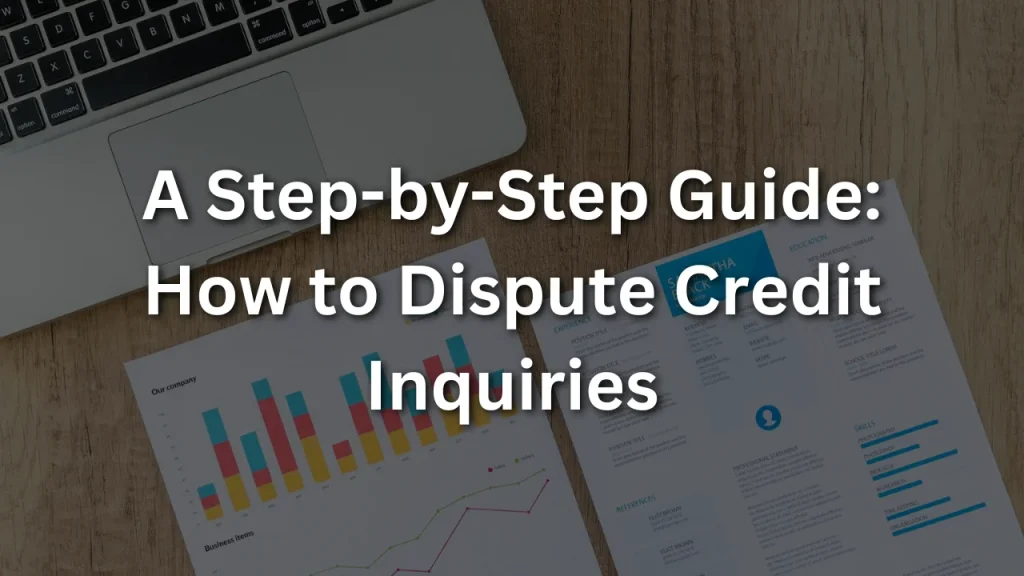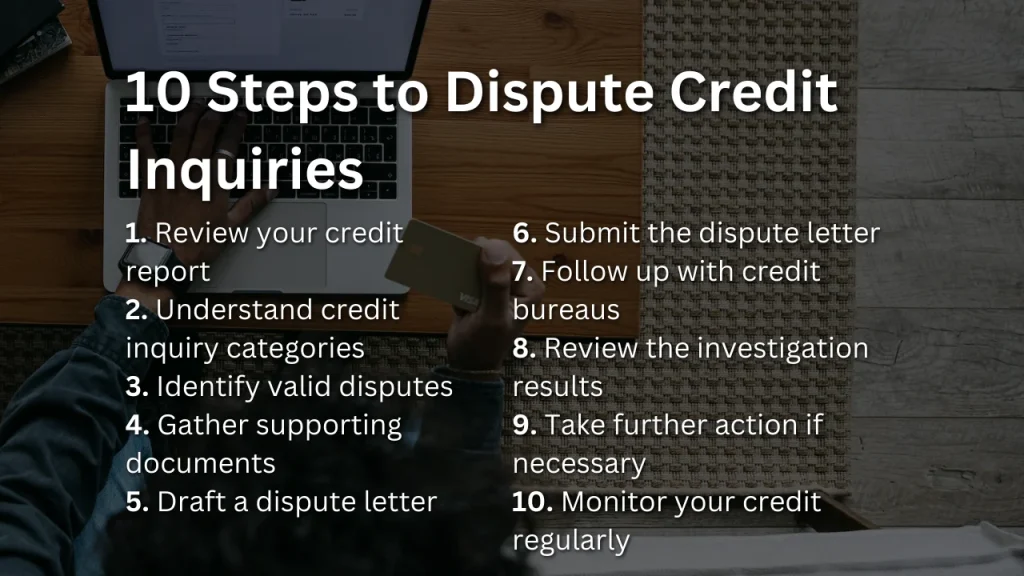In this helpful guide, you will learn step-by-step how to effectively dispute credit inquiries. Whether you have noticed unauthorized inquiries on your credit report or you simply want to understand the process better, this article will provide you with a clear and straightforward approach to resolving any issues. By following these easy steps, you will gain the knowledge and confidence to take control of your credit history and ensure its accuracy. So let’s get started on this journey towards financial peace of mind!

Step 1: Review Your Credit Report
The first step in Disputing credit inquiries is to request a copy of your credit report from each of the major credit bureaus – Equifax, Experian, and TransUnion. You are entitled to one free credit report from each bureau annually, which can be requested online or by mail. Once you have your credit reports in hand, carefully review them for any unauthorized credit inquiries. These inquiries may indicate potential fraud or errors that need to be addressed.
Step 2: Understand Credit Inquiry Categories
Credit inquiries fall into three main categories: soft inquiries, hard inquiries, and public record inquiries. Soft inquiries occur when your credit report is accessed for non-lending purposes, such as pre-approved credit offers or background checks. Hard inquiries, on the other hand, are the result of credit applications and can impact your credit score. Public record inquiries relate to items like bankruptcies and tax liens.
Step 3: Identify Valid Disputes
Next, identify the credit inquiries that you believe are inaccurate or unauthorized. Valid disputes may include incorrect personal information, unauthorized hard inquiries, or outdated and incorrect public record inquiries. It’s essential to focus on disputing genuine errors rather than challenging legitimate inquiries.
Step 4: Gather Supporting Documents
Before drafting your dispute letter, gather the necessary supporting documents. These may include proof of your identity, such as a copy of your driver’s license or passport, as well as any evidence related to each disputed credit inquiry. Having these documents on hand will strengthen your case and make the dispute process smoother.

Step 5: Draft a Dispute Letter
Now that you have gathered your supporting documents, it’s time to draft a dispute letter. Format the letter as a formal business letter, clearly stating your dispute and providing all necessary details. Be sure to include copies of any supporting evidence and your contact information. Additionally, request a response from the credit bureaus within a specific timeframe, typically 30 days.
Step 6: Submit the Dispute Letter
Choosing the right method of submission is crucial when sending your dispute letter. You can typically submit the letter online, by mail, or by fax, depending on the credit bureau’s preference. It’s important to send the dispute letter to all relevant credit bureaus, as each one maintains its own credit report. Consider sending your letter via certified mail to ensure proof of delivery and add an extra layer of security.

Step 7: Follow Up with Credit Bureaus
Once you have submitted your dispute letter, it’s essential to keep copies of all communication with the credit bureaus. Maintain a record of the date and method of submission, as well as any response you receive. The credit bureaus will then investigate your dispute, and it’s crucial to respond promptly to any additional requests for information they may have.
Step 8: Review the Investigation Results
After the credit bureaus have completed their investigation, it’s important to review updated credit reports. Check to see if the disputed inquiries have been removed or updated to reflect the correct information. If the incorrect inquiries have been removed, this can positively affect your credit score and overall creditworthiness.
Step 9: Take Further Action if Necessary
In some cases, further action may be necessary if the credit bureau’s investigation does not yield satisfactory results. You can try disputing directly with the creditor who made the inquiry, providing them with the supporting evidence you gathered. If that doesn’t resolve the issue, you can file a complaint with the Consumer Financial Protection Bureau (CFPB), a government agency that helps protect consumers’ financial rights. Finally, if the process becomes overwhelming or complex, it may be worthwhile to consult with a credit repair professional who can provide guidance and expertise.
Step 10: Monitor Your Credit Regularly
Even after successfully disputing credit inquiries, it’s important to continue monitoring your credit regularly. This includes reviewing your credit reports periodically to check for any new unauthorized inquiries or errors. Setting up credit monitoring alerts can help notify you of any changes to your credit file promptly. If you spot any new unauthorized credit inquiries, take immediate action to dispute them using the steps outlined in this guide.

By following this step-by-step guide, you can gain control over your credit information and effectively dispute any inaccurate or unauthorized credit inquiries. Protecting your credit score and financial well-being is crucial, and staying proactive in monitoring and addressing credit inquiries will contribute to your overall financial success.